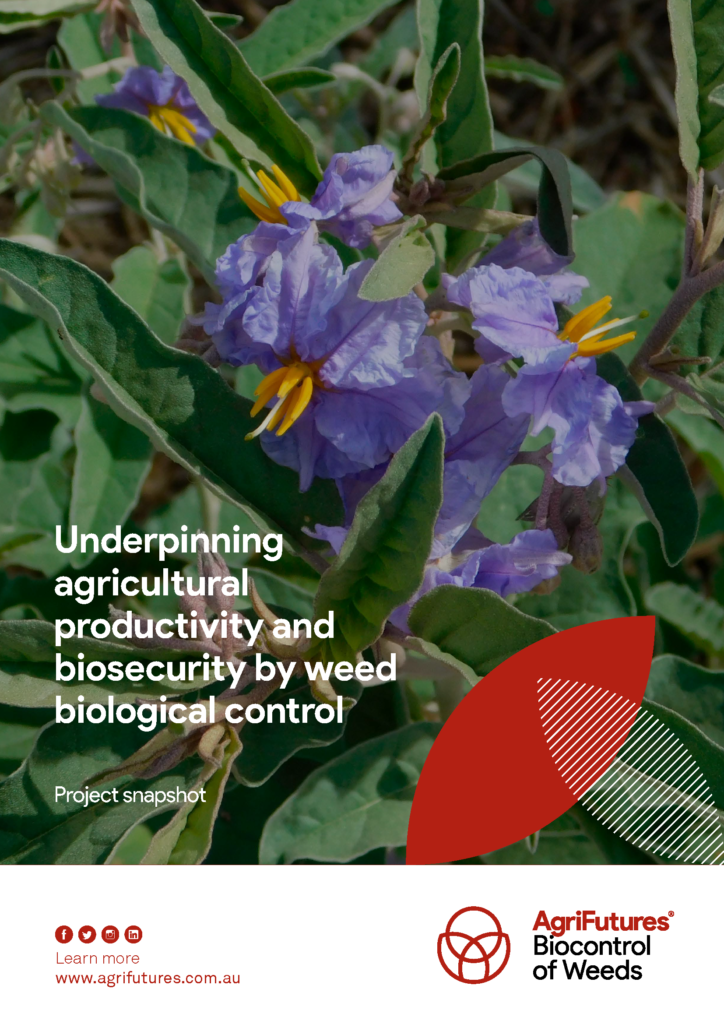New biocontrol solution for sustainable management of weed impacts to agricultural profitability
This project aimed to develop biocontrol agents for the control of ten weeds of importance in Australia. Five of these weeds are Weeds of National...
 NATIONAL CHALLENGES AND OPPORTUNITIES
NATIONAL CHALLENGES AND OPPORTUNITIES 
27 pages
Published: 22 Jul 2023
Author(s): Michelle Rafter, Ben Gooden, Andrew McConnachie, Greg Lefoe, Kunjithapatham Dhileepan, Tony Pople , Jason Callander
Download report PDF
DownloadPurchase a hard copy - AUD $50
Biological control is widely recognised as offering a more sustainable and integrated approach to weed management. If established successfully, biological control agents require minimal ongoing investment and significantly improve the productivity, profitability and competitiveness of Australia’s agricultural industries on the global stage.
Weeds threaten Australia’s environment, primary production industries, communities and shared spaces. They damage agricultural lands and waterways, harm livestock and reduce farm productivity and profitability. It’s estimated Australia spends up to $6 billion annually managing weeds to protect ecosystems and primary production.
The project was supported by funding from the Australian Government Department of Agriculture, Fisheries and Forestry (DAFF) as part of its Rural R&D for Profit (R&D4P) program, AgriFutures Australia, the Grains Research and Development Corporation (GRDC), commercial companies, CSIRO, state government departments and universities.
Work was undertaken by four Australian research institutions – CSIRO, New South Wales Department of Primary Industries (NSW DPI), Queensland Department of Agriculture and Fisheries (QDAF) and Agriculture Victoria. These institutions have worked closely with international partners and collaborators to identify potential biological control agents and to manage a rigorous research and regulatory process to import the agents into Australia.
Out of 11 problem weeds, five now have new biological control options thanks to the work of the researchers. While the impact of biological control can take several years or even decades to bear fruit, primary producers can be assured that significant progress has been made in adding more tools to help manage troublesome weeds. Specifically, the project launched a series of pilot and mass-release programs, including:
(1) A pilot release program for a biocontrol rust fungus agent to manage African boxthorn.
(2) A trial program to establish a rust fungus biological control agent for flaxleaf fleabane.
(3) Establishment of a mass-rearing facility to breed a weevil to manage cabomba in south-east Queensland.
(4) Completion of a mass-rearing facility to manage Hudson pear in north-western NSW.
(5) Targeted releases of a thrips species in northern Queensland to reduce the impact of prickly acacia on cattle properties.
Additionally, significant progress has been made relating to control of other target weed species.